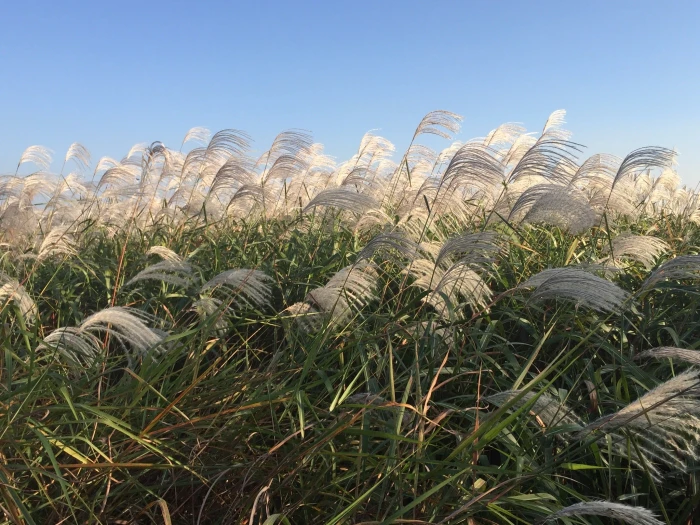Amur Silvergrass
(Miscanthus sacchariflorus)
Amur Silvergrass (Miscanthus sacchariflorus)
/
/

© Kim, Hyun-tae
CC BY 4.0
Image By:
© Kim, Hyun-tae
Recorded By:
Copyright:
CC BY 4.0
Copyright Notice:
Photo by: © Kim, Hyun-tae | License Type: CC BY 4.0 | License URL: http://creativecommons.org/licenses/by/4.0/ | Uploader: pintail | Publisher: iNaturalist |




















Estimated Native Range
Climate Requirements for East Chicago, Indiana
| This Plant | Your Site | Plant Suitability for Your Location | ||
|---|---|---|---|---|
| • Precipitation | 8" - 100" | 38" | Aquatic | Aquatic |
| • High Temp. | 67°F - 92°F | 85°F | Your summer temperatures are normal for this plant. | Excellent |
| • Low Temp. | -31°F - 59°F | 15°F | Your winter temperatures are normal for this plant | Excellent |
This plant should grow well at your location with about N inches per year (Y minutes per month) of irrigation.
Summary
Miscanthus sacchariflorus, commonly known as Amur silvergrass, is a perennial grass native to wetlands, riverbanks, and moist meadows in temperate Northeast Asia, including regions of China, Japan, and Korea. This species typically grows to a height of 5-9 feet (1.5-2.7 meters) and spreads 4-6 feet (1.2-1.8 meters) wide. It forms dense clumps of arching foliage, with feathery flower plumes that emerge in late summer and persist into winter, providing visual interest. The flowers are silvery-white, contributing to the plant’s common name, and can be quite showy. Amur silvergrass is deciduous, dying back in winter before regrowing in spring.
Amur silvergrass is valued for its tall, graceful form and its ability to create a strong vertical presence in the landscape. It is often used as a screen or backdrop in garden borders and is effective for erosion control on slopes due to its dense root system. This grass prefers full sun to part shade and thrives in moist, fertile soils, but it can also tolerate some drought once established. While it is low-maintenance, it may require division every few years to manage its spread. Gardeners should be cautious, as it can become invasive outside its native range, spreading by rhizomes and self-seeding. It is recommended to remove flower heads before they set seed if grown in areas where it is known to be invasive.CC BY-SA 4.0
Amur silvergrass is valued for its tall, graceful form and its ability to create a strong vertical presence in the landscape. It is often used as a screen or backdrop in garden borders and is effective for erosion control on slopes due to its dense root system. This grass prefers full sun to part shade and thrives in moist, fertile soils, but it can also tolerate some drought once established. While it is low-maintenance, it may require division every few years to manage its spread. Gardeners should be cautious, as it can become invasive outside its native range, spreading by rhizomes and self-seeding. It is recommended to remove flower heads before they set seed if grown in areas where it is known to be invasive.CC BY-SA 4.0
Plant Description
- Plant Type: Grass
- Height: 6-10 feet
- Width: 3-5 feet
- Growth Rate: Rapid
- Flower Color: N/A
- Flowering Season: Summer, Fall
- Leaf Retention: Deciduous
Growth Requirements
- Sun: Full Sun
- Water: Medium
- Drainage: Medium
Common Uses
Border Plant, Erosion Control, Low Maintenance
Natural Habitat
Wetlands, riverbanks, and moist meadows in temperate Northeast Asia
Other Names
Common Names: Silver Banner Grass, Silver Plume Grass, Di, Ogi, Japanese Plume Grass, Miscanthus
Scientific Names: Miscanthus sacchariflorus, Imperata eulalioides, Imperata sacchariflora, Miscanthus hackelii, Miscanthus saccariflorus, Miscanthus saccharifer, Miscanthus sacchariflorus, Miscanthus sacchariflorus, Miscanthus sacchariflorus f. latifolius
GBIF Accepted Name: Miscanthus sacchariflorus